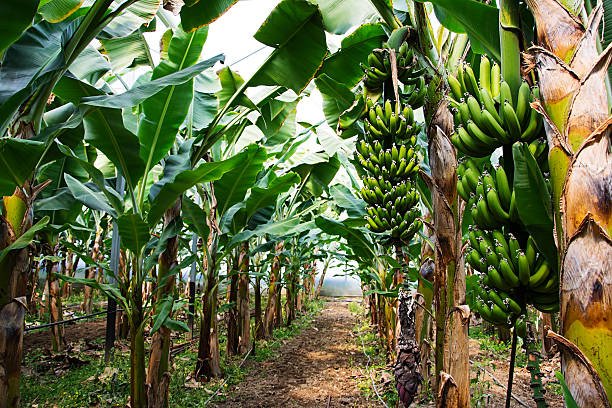Banana farming
Banana Farming: A Complete Guide
Banana farming is a profitable and widely practiced agricultural activity in tropical and subtropical regions. Bananas are among the most consumed fruits globally due to their nutritional value, easy cultivation, and high market demand.
- Climate and Soil Requirements
Bananas thrive in warm and humid climates with temperatures between 25°C to 30°C. They require well-drained, fertile soil rich in organic matter, with a pH of 5.5 to 7.0. Regular irrigation and protection from strong winds are essential for healthy growth.
- Varieties of Bananas
There are many banana varieties, but the most common ones include:
Cavendish – Popular for commercial production.
Plantain – Used for cooking.
Robusta – High-yielding variety.
Grand Naine – Preferred for its uniform size and taste.
- Propagation and Planting
Bananas are propagated using suckers (small shoots from mature plants) or tissue culture plants. Planting is done at a spacing of 1.5 to 3 meters to allow proper growth. The best time to plant is at the beginning of the rainy season.
- Care and Management
Watering: Regular irrigation is needed, especially during dry periods.
Fertilization: Organic manure and chemical fertilizers like nitrogen, phosphorus, and potassium improve yield.
Weed Control: Regular weeding helps prevent competition for nutrients.
Disease & Pest Control: Common diseases include Panama disease and Sigatoka, while pests like banana weevils and nematodes should be managed using pesticides or biological control.
- Harvesting and Yield
Bananas are ready for harvest 8–12 months after planting. They are harvested when the fruits are mature but still green, allowing them to ripen after harvesting. A single plant can produce 30–50 kg of bananas in one cycle.
- Market and Profitability
Banana farming is highly profitable due to high local and international demand. Fresh bananas, processed banana products (chips, flour, and puree), and banana fiber are valuable in the market. Proper storage and transportation are necessary to prevent damage.
Conclusion
Banana farming is a sustainable and profitable business when managed well. By choosing the right variety, maintaining proper soil health, and controlling pests and diseases, farmers can achieve high yields and good profits.
Would you like more details on a specific aspect of banana farming?
